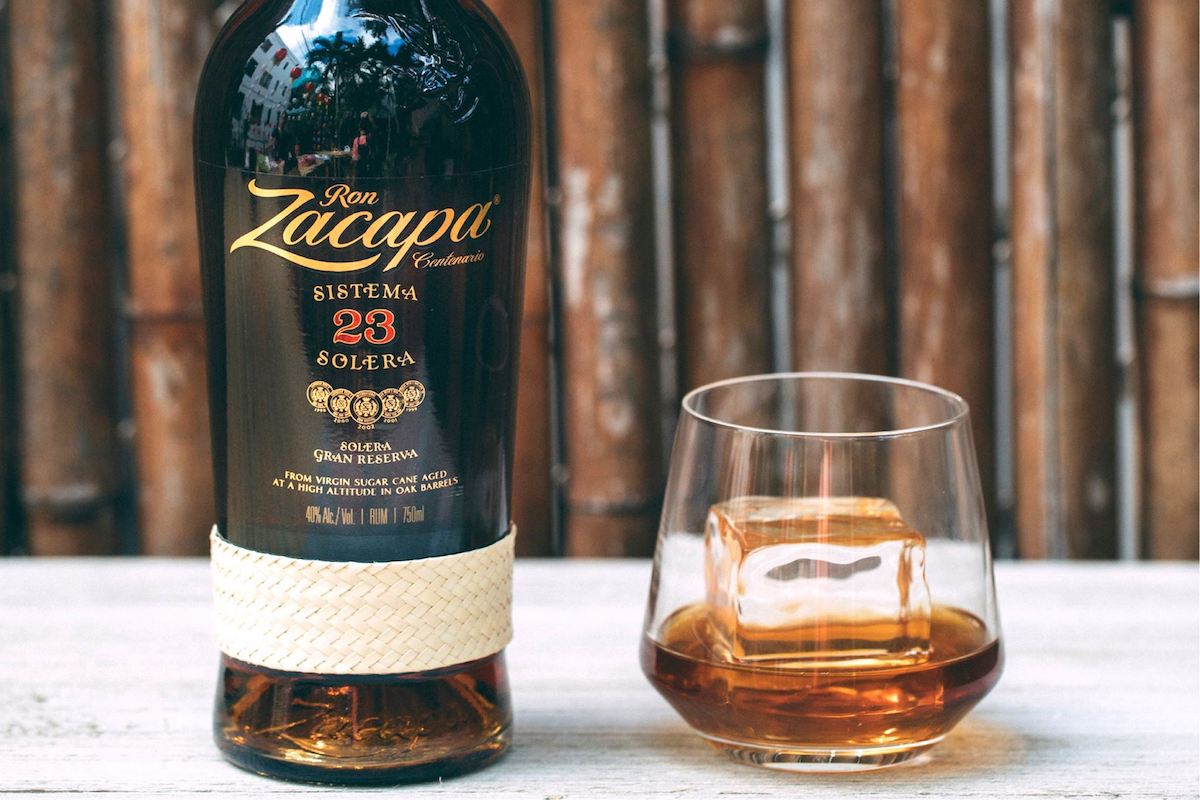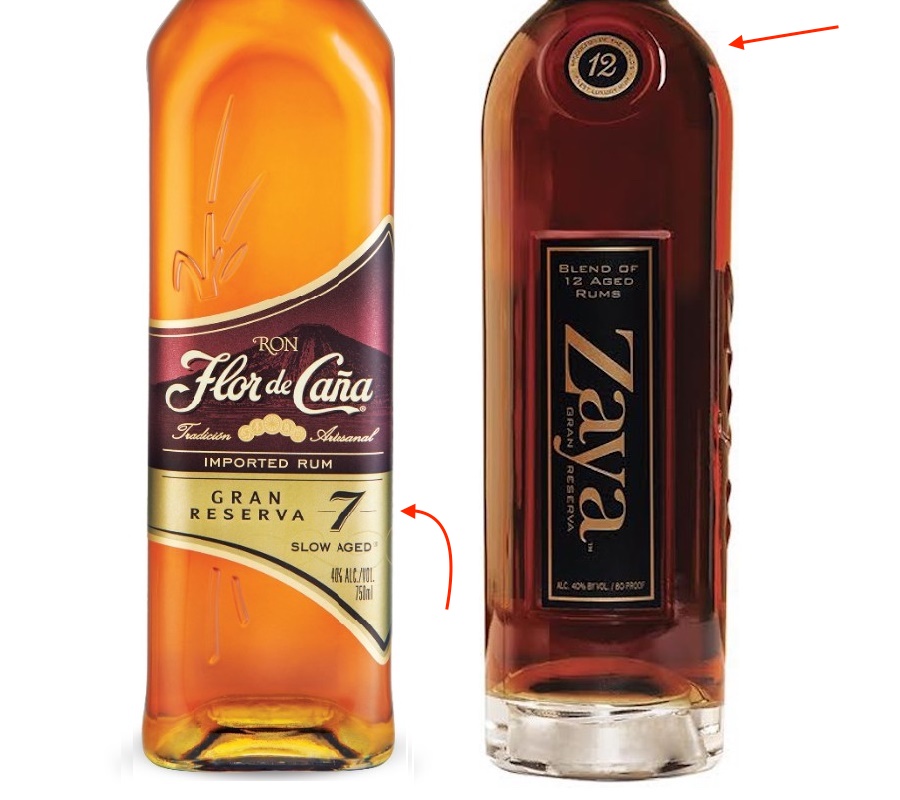This post is part of our Rum Hub.
This is the fourth article in a series on rum misconceptions by rum expert Matt Pietrek. In previous installments, we learned that not all white rums are the same, rum isn’t sweet, and darker rum isn’t necessarily older. Here, we’ll discuss why a prominently featured number (perceived as the “age”) is often a misleading indicator of quality. Finally, we’ll wrap up our series by dispelling the notion that rum has no rules.
It’s all so confusing. You’re standing before a wall of rum at the liquor store, trying to pick a good bottle that’s not too expensive. You’re barraged by numbers—Ron Zacapa 23, Zaya 12, Kirk and Sweeney 12, Flor de Caña 18, Doorly’s 8—and all less than $50. Surely the older ones, those with the larger numbers on the label, must be better, right? By this point in the series, you can probably surmise that the answer is a resounding “no.”
In fact, given their pick of the above bottles, many hardcore rum drinkers wouldn’t blink an eye before choosing the “youngest” rum in the lot, the Doorly’s 8-year. You see, they know that age is just one part of a rum’s quality. Equally important, they know that the “age statement” isn’t consistently used, and may not even reflect the rum’s actual age.
The Real Age of Rums
Let’s start with the sunniest possible interpretation of the number on a bottle before we lower ourselves into the shenanigans. In an ideal world, a rum bottle that says “8 years” on the label holds not a drop of rum aged for fewer than eight years. That is, the age statement is a guaranteed minimum age for the entire content of the bottle. In many countries, including the United States, this interpretation is the law.
This sounds great, except that eight years isn’t always eight years when it comes to the aging process. All barrels are different, and new barrels impart a lot of flavor from the wood itself. We see this in bourbon, where using new barrels is a requirement, with the resulting bourbon acquiring a very vanilla-forward profile from the wood. At the other end of the spectrum, many producers seek out previously used casks because they’re more “neutral.” For example, Cuban producers want the oldest barrels they can get their hands on—they want as little flavor extraction from the wood as possible, preferring all the flavor to come from oxidation.
In addition to the barrel’s past history, the location where the aging occurs has a huge impact on how quickly the aging process happens. In warmer climates like the Caribbean, the chemical process referred to as “aging” occurs faster than in cooler climates like Scotland. Think this is an absurd example? Many independent bottlers ship casks of rum from the Caribbean to northern Europe (and Scotland in particular) for extended aging. In the cool, damp climate, the flavor of the barrel’s contents transforms more slowly, bringing out different flavor characteristics.
In short, even with consistently enforced regulations around age statements, the value of the declared age is much less than you might think. There are just too many other variables to realistically represent aging as a single number.

Truth in Rum Labeling
The story gets even more confusing when you encounter solera aging, originally invented in Spain as a fractional blending technique to create a consistent flavor profile in wines made over a number of years. By the time a solera-aged spirit is bottled, it has spent time in a number of different barrels and has been blended with spirits of different ages from other barrels. Take Ron Zacapa Centenario, perhaps the most well-known solera-aged rum. The company states that it’s a blend of rums between six years and 23 years. By the “minimum age” requirement referenced above, the label could truthfully say “6 years” on the label. Yet the label says “Zacapa 23,” referencing the oldest rum in the blend. As confusing as that is, with Zacapa 23 there’s at least some correlation between the label number and an age, if only a partial one.
Descending even deeper, we come to rums creatively named to imply an age statement. Take the “El Dorado Grand Special Reserve,” which says “50 years” prominently on the label. It’s only on closer inspection that you see it’s celebrating 50 years of Guyanese independence. The rum within is a blend of rums from 33 to 50 years. Surely nothing to sneeze at, but it’s not a 50-year minimum. A more egregious example is Zaya, once the darling of the rum enthusiast crowd, with a truthful age statement of 12 years. More recently, Zaya was massively reformulated and is now a blend of “12 different rare rums.” Yet the bottle’s labeling has barely changed from before and still prominently features a “12” at the bottle’s neck. Only the very fine print mentions “12 different rare rums,” which is not an age statement in the slightest.
Flor de Caña tells a similar story. What was once a seven year age statement was oh-so-subtly changed to just “7” without including the key word “years.” By any reasonable measure, these labels can only be interpreted as intending to influence the consumer into thinking it represents an age statement. Sadly, there’s demonstrable proof that it’s working. Retailers themselves are confused and pass along this false information to consumers.

Numbers don’t always equal years.
Go to any online spirits retailer and search for Zaya. A shockingly high number of listings call it a twelve-year-old rum. It’s the same story with Flor de Caña, Zacapa, and many others. And so far, there’s been very little visible effort to crack down on this consumer fraud, regardless of whether it’s intentional.
As high-end rum struggles to gain the same respect as bourbon and single malt Scotch whisky, the lack of consistency around age statements, or what consumers believe are age statements, holds the category back. How can the labels be trusted? Bourbon and scotch have a much stronger story when it comes to age statements, as their industries have strict, enforced regulations to prevent most chicanery.
Does rum’s lack of regulation hold it back? Trick question! Rum has plenty of regulations. In the next installment of this series, we’ll learn about rum regulations, and why many persist in thinking rum has no rules.
Return to the Rum Hub.



